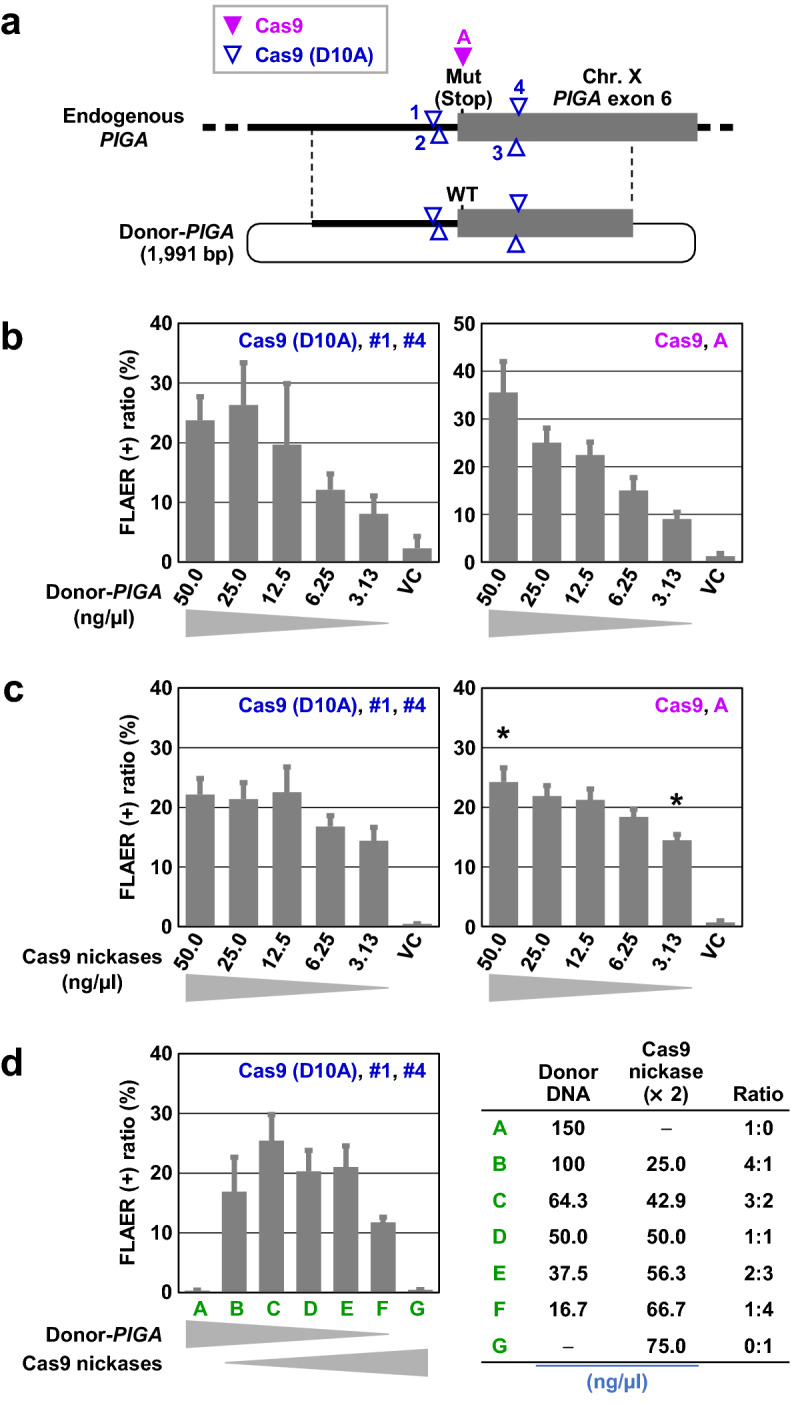Figure 5.

Transfection with a large amount of a donor plasmid leads to efficient targeted knock-in via TPN. (a) Scheme showing the experimental setup of the assay. (b) The efficiency of targeted knock-in achieved using different concentrations of Donor-PIGA. (c) The efficiency of targeted knock-in achieved using different concentrations of Cas9 plasmids. In (c), a statistically significant difference in the efficiency of targeted knock-in was observed only between the transfection of 50 ng/µL and 3.13 ng/µL plasmids expressing the Cas9 nuclease (*; p = 0.02) in a concentration range of 3.13–50.0 ng/µL. In (b,c), when concentrations of Donor-PIGA and Cas9 plasmids are not denoted on the graphs, these plasmids were used at 50 ng/µL, and the resultant plasmid solutions were supplemented with pBluescript II KS ( +) up to 150 ng/µL. (d) The efficiency of targeted knock-in achieved by transfecting various concentrations of Donor-PIGA and plasmids expressing Cas9 nickases. The sum of three plasmid concentrations was fixed at 150 ng/µL as shown to the right of the graph. Data obtained with experimental conditions B–F were not significantly different. In (b–d), 50 ng/µL plasmids (1 μg plasmids dissolved into 20 µL electroporation buffer per sample) correspond to 15.5 nM (Donor-PIGA; 4895 bp including a 1991 bp homologous region) or 8.3 nM (Cas9 plasmids; 9178 bp) in molar concentration. Data represent the mean and SEM values of three independent experiments.
